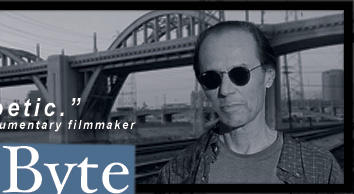
 |
The Enlightened Phlebotomist
Every year, my personal physician wants to drain blood out of me for testing. I oblige and the results, so far, have been excellent. On the other hand, my visit to the phlebotomist — the one who draws my blood — makes me ill at ease. Since I’ve never been a diabetic or a junkie, jelly popping needles into my blood vessels isn’t something I’m comfortable with. It’s not that I’m afraid of needles. I poke my skin with them all the time. It’s just that I don’t like something wiggling around in my veins. If I watch the needle drawing my blood, I feel woozy. I want to change that. But until now, I just couldn’t find a way. For this year’s blood giving, I made my appointment for 7 am, arrived a few minutes early and began reading my waiting room book, Ways of Seeing by John Berger. When my name was called, I was shown into a room with a long table divided into private bank teller sized cubicles — blood takers (phlebotomists) on one side, bleeders on the other. Being who I am, I began sizing up the phlebotomists. I was looking for someone confident, focused, good with a hyperdermic, yet gentle. I chose a woman who looked like Senator Elizabeth Warren. “Nathan?” a phelebotomist said. It wasn’t Senator Warren, but a woman named So Yung, who looked like she had just arrived to work. I gripped my arm and I wondered if the first draw of the day requires a few practice punches. As a way of introduction, I told So Yung that my left arm has the best direct access to blood. There’s a wonderful bulge in the vein at the crook of my elbow. I rolled up my sleeve and slapped it. She laughed and looked me in the eyes. This was no ordinary phlebotomist. This was So Yung enlightened in complete control. A bodhisattva with a syringe, she was calm, centered and serene. If I died right now, I’d be in good hands, I thought, while she meditated on the tip of the needle. “Ways of Seeing John Berger,” So Yung said, reading the title on the cover of my book as if John Berger had many ways to be seen. “Yes,” I said… blood draining out my arm. The needle had visited my vein imperceptibly. “Is good book?” So Yung said. “Very,” I answered and tried to explain. Forty years ago, the newly published Ways of Seeing by John Berger blew apart Western ideas about art. Berger showed how what we consider great art was largely pandering to the upper-class with visual images. So Yung attached another vile. The blood was flowing. Far from elevating a viewer's soul, great art was, more often than not, created to celebrate the “One-percent” along with the social inequality, if not downright slavery that followed in the wake of their hoarding of money and material things. So Yung listened as I talked. She was drawing my blood into yet another vile and I was watching it feeling fine. Ways of Seeing explained how the reproduction of art — in books, in posters and now online — has not only demystied and relocated the place that art holds in our culture, but redefined our interpretation of images. So Yung pulled the needle out. She was finished. It was the best blood-letting of my life. Out of gratitude (and nervous energy) I read her a paragraph from the book. “The past is never waiting there to be discovered, to be recognized for exactly what it is,” Berger wrote. “History always constitutes the relationship between a present and its past. Consequently, fear of the present leads to mystification of the past. The past is not for living in; it is a well of conclusions from which we draw in order to act.” “The past is not for living in. I will read ‘Ways of Seeing John Berger,’” So Yung said. I smiled and thanked her. I’m not sure if So Yung will ever read about the ways of seeing John Berger, but I’m seeing phlebotomy in a completely different way now. — Nathan
Callahan © NathanCallahan.com / Nathan Callahan / all rights reserved |
Broadcasting Fridays at 8:50 am from KUCI 88.9 fm Orange County, California
|